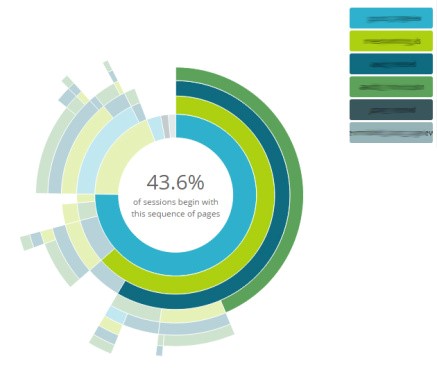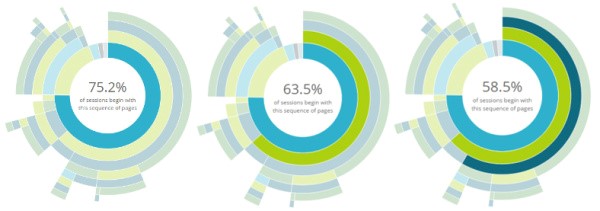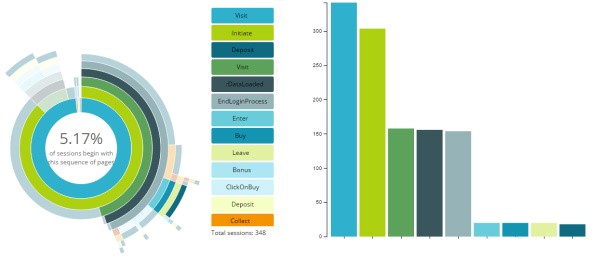Google's new Analytics Premium offering
includes deployment help and ongoing support
that enterprises need. Its flat fee will attract interest,
but its limitations will keep it from changing the
market's competitive dynamics.
—Bill Gassman, Gartner
If you are a marketer, whether at a marketing agency, a brand, or a company, or you're a marketing consultant, you no doubt are always looking for ways to get your clients or company a leg up on the competition. You have Google Analytics experts, dashboards, reports on demand, and more. GA has helped get you to where you are now.
You've learned from the ground up how to harness the power of the data that GA provides, but over the past year or so, you've started taking notice of what's happening around you in analytics. You see a whole new playing field taking shape. And you want to be on that field!
Real-time analytics aren't optional.
Organizations that can't deliver faster
insights on streaming data will be left behind.
—Forrester Research
In short, you want answers to the deeper business questions that GA doesn't provide. To gain a comprehensive understanding of a brand's users, personas, and target audience, you need to become an adopter of the next generation of real-time, time-series analytics: behavioral analytics.
A Way to Stand Out
With behavioral analytics, you can track the entire user journey via a timeline of events. You see every action on every event you set up to track, whether 1,000 events or a million. These can be mouse hovers, email opens/clicks, CRM activity, and even offline sales. You see not only the actions but also the events between the actions. The moments. This is where you really get an all-encompassing picture of the user journey.
Perhaps, then, it's time to start setting your agency/consultancy/brand apart: Time to show higher ROI in real-time and gain competitive advantage.
Lots of marketing folks think that behavioral analytics is an alternative to GA, but that's a myth. It's in fact a total replacement: a move from the old to the new.
Here's an example why.
Disconnected vs. Unified, Holistic Views
Say you've been helping a client track user buying habits using GA. You study the GA dashboard daily, tracking pageviews, conversions, click rates, and bounce rates. These are moments frozen in time. Snapshots. It's what happened this morning, yesterday, or last week. It's not what is happening now. With Google Analytics, you're getting static information.
When you independently analyze each user action, it provides you with a skewed idea of what exactly your customers are doing. The data is fragmented and takes a long time to figure out, if at all. Users' digital behavior is much more than just a single action at a frozen point in time.
Using behavioral analytics, what you see are more like digital footprints that are presented in a timeline-like fashion to help you dig deeper and see patterns.
Behavioral Analytics Advances: The amount
companies spend on digital ads is expected to
grow to as much as $77.37 billion in the US alone
next year, and understanding the audience is vital
to ensuring this is money well spent.
—"Data Analytics Top Trends in 2017"
Getting the Most Out of Your Advertising Dollars
When you're able to see the complete picture encompassing the total amount of shares of your content, broken down according to diverse audience segments, platform source, and content category, it will provide you with a deeper understanding of the type of content, social media platforms, affiliate or other content sites that are the best options for spending your advertising dollars.
Customer behavior, when analyzed and integrated among all the different touch points, can shed great insight on the complete user journey and facilitate content optimization that will allow you to maximize ROI in real-time.
Through path analysis you can see those moments via powerful visualizations that will help you understand why users are behaving as they are, and optimize their path to your desired goal.
Analytics is about taking your data and
outside influences (i.e. [sic] time of year)
and building insights from all of it.
—Fiona Roddis, "In the Aftermath of Mobilegeddon"
You're empowered to go beyond the baseline that GA provides by tracking only Web and mobile, as behavioral analytics also tracks social, email, CRM, offline, and any other data source marketers want to stream into the platform in real-time.

By unifying the data from all the sources in one place, you can build the insights Fiona is referring to.
Behavioral analytics gives you what you need to gain a better understanding of who is using your website or product, not just what they are doing. With "what" info, you can't really get to the "why." Lacking any behavioral data, how are you going to get to the why users are doing what they do, and influence the business?
Different Paths to the Same Goal
For example, by using sunburst visualization (shown below) to showcase path analysis, marketers can display multiple paths to a goal. The round sunburst highlights the most common paths users take to a goal and behavioral anomalies stand out as spikes. Built as a dynamic and shareable report, it lets you select a path or step in the path, to get more detailed information.

As we can see below, when this whole path is selected, 43.6% of all sessions begin with the sequence of events that are detailed in the legend on the right. Clicking the first step shows that 75.2% of sessions follow the first step, and it goes down to 58.5% on the third step.


And you can go further with the analysis, to display (as shown below) the selected path as funnel visualization, showing clearly the drop off rate between the funnel steps.

In every stage of the analysis, you can enhance the query by adding segments and dimensions, and drill down to the granular data at the single-user level.
Lack of Data Means Lack of Answers
When you have a disruptive question (see below) that Google Analytics is unable to address, where does that leave you? More so, where does it leave your clients or company? The data simply is not there.

Let's take another example. XYZ travel needed to go further than the information that HubSpot campaign analytics provided to go beyond basic KPIs. With powerful time-segmented querying, XYZ could ask questions on the data and get immediate answers, such as how many Australian users searched for a specific item last Sunday 8-9 AM, and then converted within 2 hours.
Personalization may never be the same again.
—"How Behavioral Analytics Is Driving Marketing"
This is where one of the powers of behavioral analytics truly lies. Using the power of segmentation, XYZ Travel was able to easily segment those users who were returned as the result of that question, allowed it to proactively send personalized push notifications or email campaigns to customers to drive sales while the iron was hot. There is no question too simple or complex to ask of your data when you move to behavioral analytics.
As they say, a picture is worth a thousand words. With a behavioral analytics solution, those powerful visualizations will not only be worth thousands of words, but will also save you time and money and maximize your brand's or client's marketing ROI.




